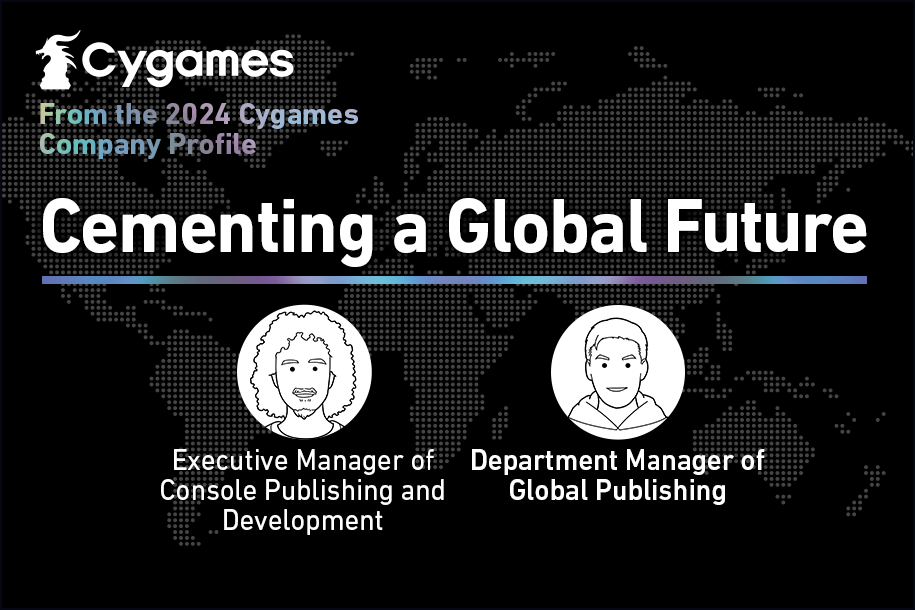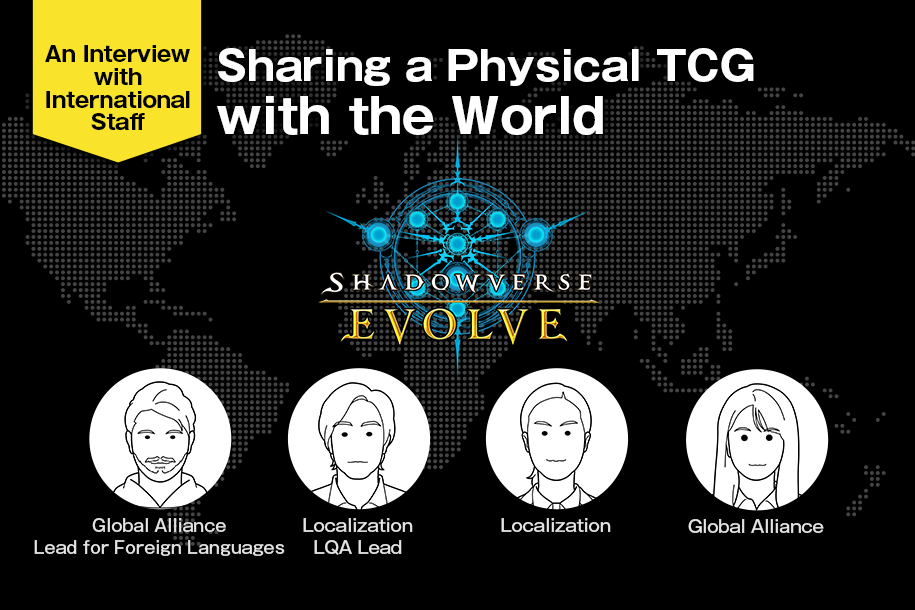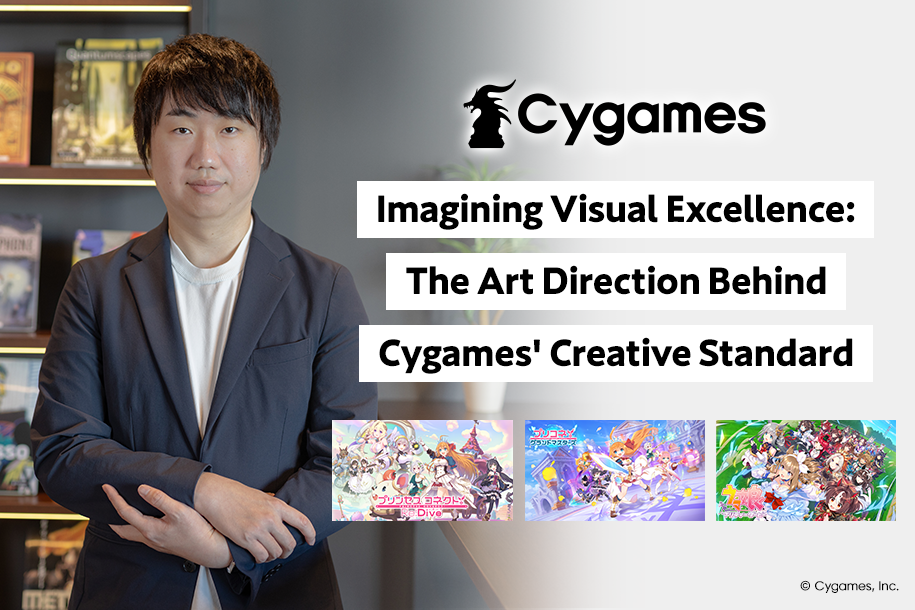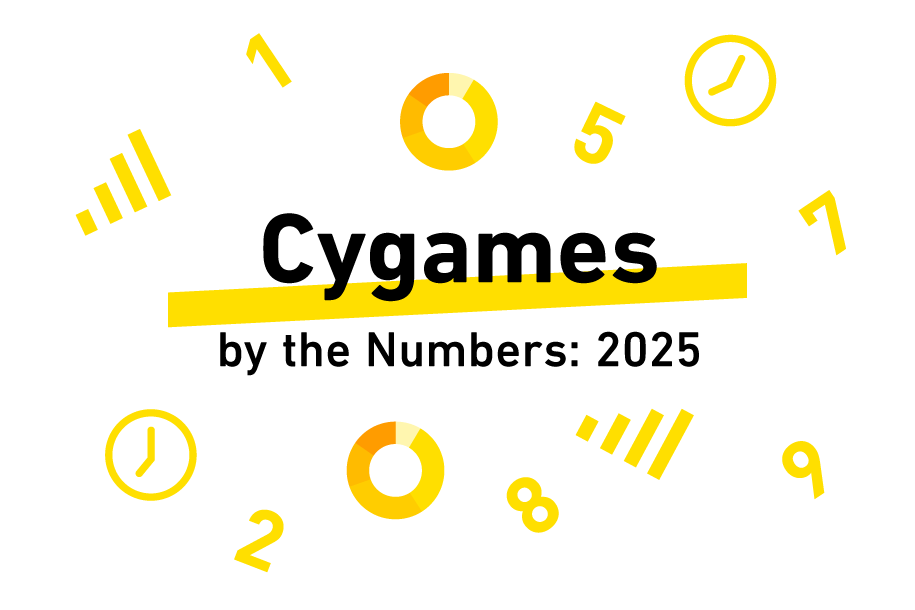World Flipper’s Global Launch! Development & Collaboration

The epic, nonstop action pinball game World Flipper is taking the world by storm. The Traditional Chinese version was released in May 2021, followed by the global version* in September, and the Simplified Chinese version in October. It is the most widely distributed Cygames title to date, reaching players in more than 180 countries and regions, and soaring up the app store sales charts. We asked staff in the Global Business Development division and the game development team how they worked together to bring about such a large-scale international expansion.
*The language in the global version can be set to Korean and many Southeast Asian and Western languages from the settings menu.
Mainstream Appeal Meets Retro Boom
Distributed to over 180 Countries and Regions!
World Flipper was released globally to great fanfare in 2021. Could you first tell us what prompted you to aim for overseas markets?
We were still at the development stage on the Japanese version when we started discussing whether a pinball game with a concept like World Flipper’s could be readily accepted by overseas players. Pinball is a game that many people around the world have played at least once, so we felt that World Flipper could have fairly high mainstream appeal, which moved the discussion about overseas versions forward.
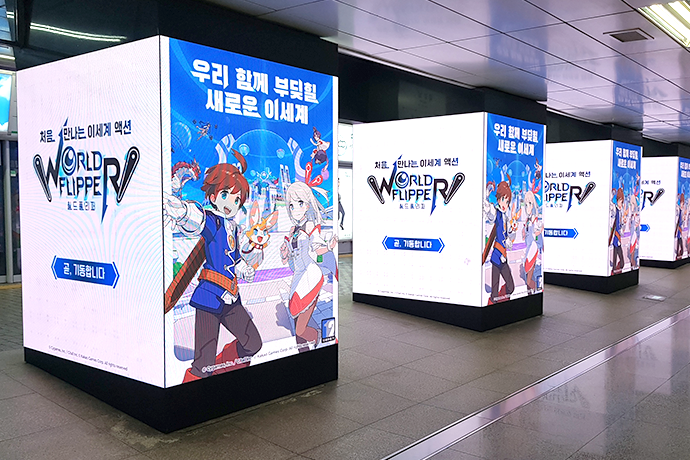

There was also a big retro boom going on, especially in Asia. We thought that the old-school nature of World Flipper’s pixelated graphics could be a big hit with that crowd.
Cygames also has a branch in Korea. Do you feel the effects of the boom over there?
Yes, you can certainly see the retro boom happening in Korea. Right now, Cyworld, a popular Korean social media platform from the 2000s, is enjoying a huge resurgence. It has bright, colorful backgrounds that feature blocky pixel illustrations, which I think signals a real comeback for that kind of look. That’s why we felt like younger audiences in particular could potentially view the pixelated animations in World Flipper as fresh and modern.
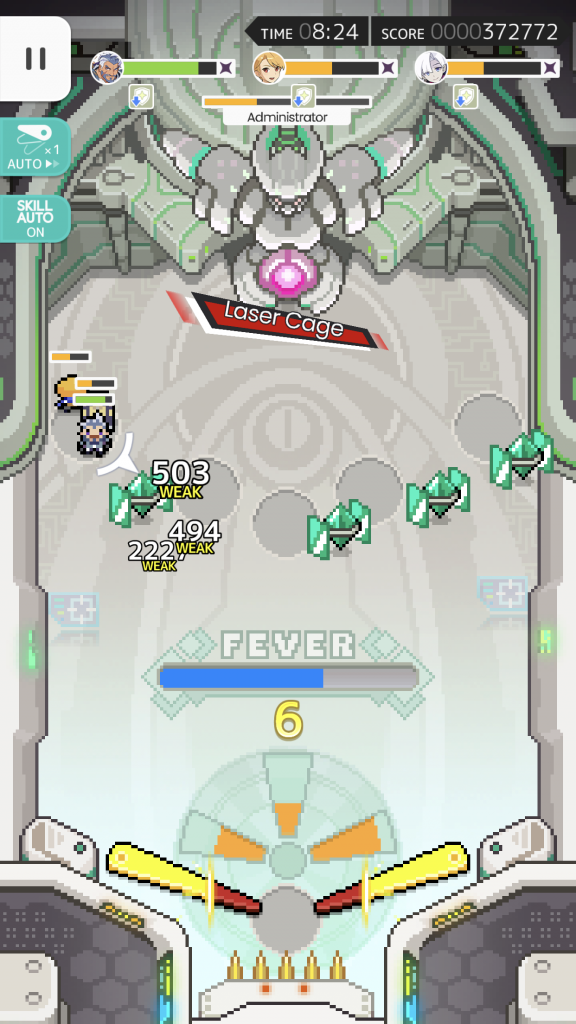
How did Cygames coordinate internally and with the publishers for the release of the overseas versions?
Looking at the project as a whole, many divisions and external partners have been involved. In addition to the Asian Division, there are Cygames staff members from the development side, like project managers and the assistant producer, and then there is our development partner and subsidiary, Citail, along with publishers in each region, creators who produce the art and music, and the list goes on.
What does the organizational breakdown of projects look like within Cygames?
The Asian Division, which is part of the Global Business Development Department, was responsible for project management for the Traditional Chinese and Simplified Chinese versions, with the Taiwanese branch of Cygames supervising the Traditional Chinese translation. Project management for the global version, as well as supervision for the Korean translation, was handled by the Korean branch. The English translation and supervision were managed by the localization team at the Tokyo headquarters.
Translations for overseas versions are often handled by the publisher, so why did Cygames step in for the English translation?
One of the biggest reasons was that, as the plan to develop the game for Western countries was moving forward, the Cygames English localization department declared that they really wanted to do it themselves. The French, German, and Spanish text for the Global version isn’t translated directly from the Japanese, but rather uses the English translation as a base. This makes the English translation particularly important in ensuring that World Flipper’s perspective and appeal is properly conveyed, so we wanted to pour our hearts into it.
As such, when we approached Kakao Games with the proposal of handling the English translation ourselves, they readily agreed. Kakao Games worked with us to publish the Korean version of Princess Connect! Re: Dive, so they had confidence in our work because we’d already collaborated for four years and had built a solid foundation of trust. We are truly grateful for our partnership.
The fact that there is no single correct way to translate a given piece of text makes it difficult. Should it be translated word-for-word from the Japanese source? Should the prose be altered to better relate the story and characters’ emotions? Taking into account the culture, society, and gaming approaches of various regions, as well as the company’s inner workings, deciding between literal and liberal translations can easily become a heated discussion for any title. That’s why I’m so grateful that we could maintain close communication between departments and foster a positive environment for the English translation.
Post-Launch Reception and
Differences from the Japanese Version
The Traditional Chinese version was released first in May 2021. Looking back at that time, what has stayed with you the most?
After the release, the large concentration of players put too much strain on the servers and we had to carry out maintenance for an extended period. While the engineering teams at Cygames and Citail were able to work together to solve the issues, it was a terrible inconvenience for all players of the Traditional Chinese version. That’s why, to avoid any potential risk of a similar occurrence, we took great pains to get everything perfectly ready before the release of the global version.
The release of the global version went so smoothly that we were unnerved; we kept waiting for the other shoe to drop, but everyone was able to just play the game without issue. (laughs) We were especially nervous because this was our first time starting service in countries in Asia and the West simultaneously.
What kind of reception did the overseas versions get?
The response was amazing—the number of registered users and the store rankings in every region were beyond our expectations. The Traditional Chinese version took second place in sales rankings, and the global version flew up the charts in the huge Korean market.
What really surprised me was the underperformance of the global version with Thai speakers. Within Southeast Asian countries, we even managed to crack the top ten in the Singapore store rankings, so I couldn’t understand why we just weren’t succeeding in the large Thai market despite our strong translation.
Did you find out what caused the underwhelming performance of the Thai language version?
As it turns out, because of the game’s settings, many people inadvertently downloaded the game in English instead of in Thai. For convenience, the global version was initially designed to automatically change the game’s language to whatever language the smartphone operating system was set to.
While smartphones and PCs are now compatible with Thai language, feature phones and older operating systems aren’t, and they can only be operated in English. It seems that, because of this, even now many people still use devices that are configured to English. The game noted that configuration and set itself to display in English.
We asked two of our Thai employees, and both of their phones were set to English. They said that language settings in Thailand are probably split fifty-fifty between Thai and English. Taking that into account, we adjusted the game so that the language could be set after downloading it, which would allow everyone to enjoy the game as they please.
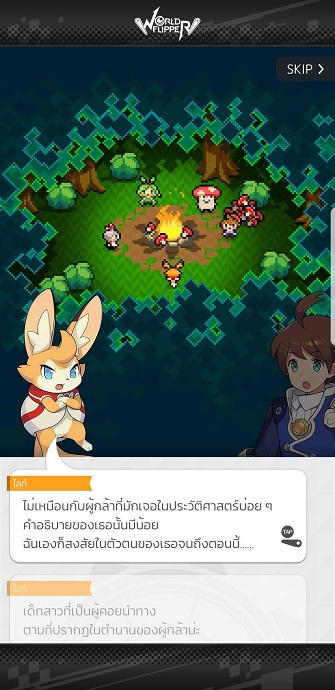
Are there any differences between the Japanese version and the overseas versions?
The illustrations have been adapted to the cultures of each region, and the prose has also been adjusted. We were in constant consultation with our internal ethical review team, but with many human and non-human characters appearing in-game, it’s very difficult to definitively judge what’s acceptable and what’s not.
World Flipper isn’t simply a game of pinball—the instantly engaging art style is a large component of its popularity. By optimizing the illustrative content for a global audience, we’ve increased the amount of content that we can show to overseas audiences as a way of introducing the kinds of games Cygames puts out.
Moving forward, I’d love to organize a system where the Overseas Division and the development team work together to be able to create content from the outset that is intended not only for Japan, but with an eye to the world at large.
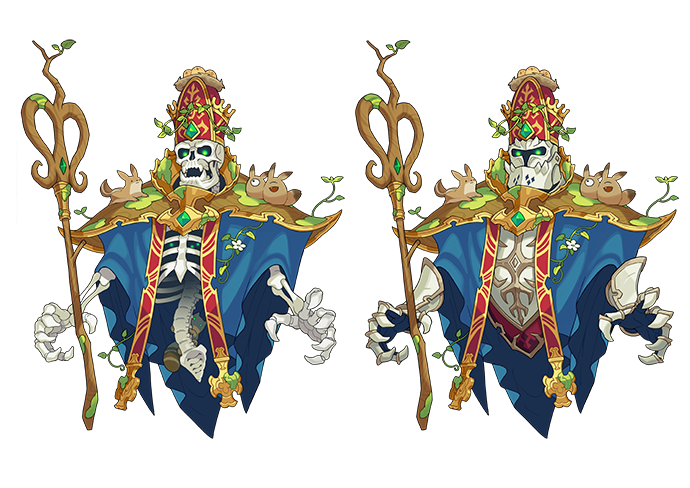
Has the game’s system changed at all between the Japanese and overseas versions?
From the beginning, the overseas versions included the improvements that were made to the Japanese version after its release. We included as many of the updated components as possible, such as balance adjustments, UI improvements, and so on.
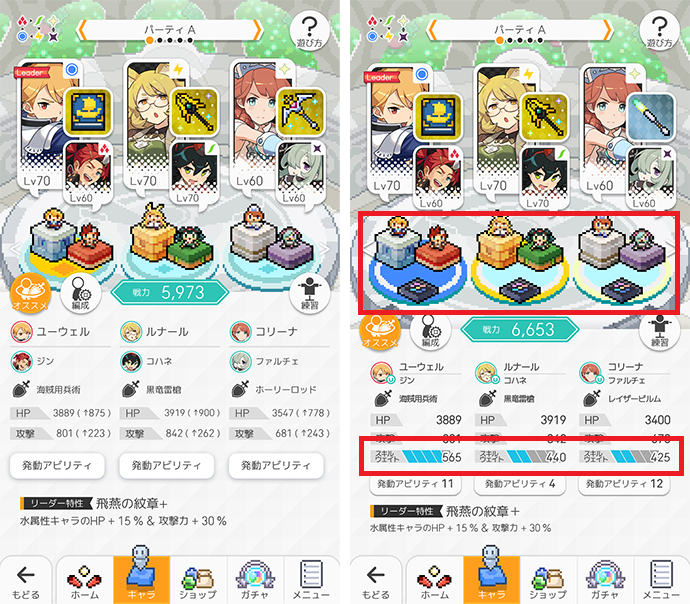
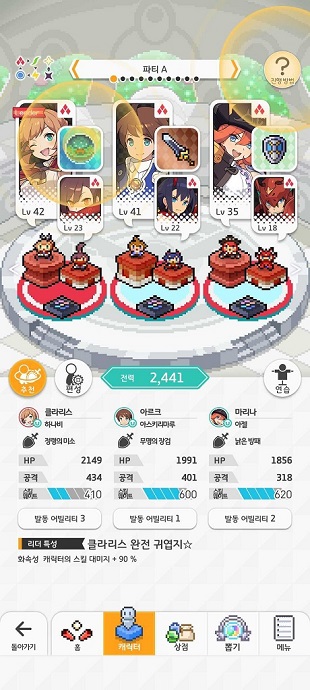
As far as the units and content added after release go, considering the amount of time between the various releases, the update schedule often differs from the Japanese version’s. We stay in close contact with the development team to make certain this doesn’t upset the game’s balance.
“A Fresh Experience”
Outlook for the Overseas Versions
The Simplified Chinese version was released at the end of October, adding to the already huge number of people around the globe playing World Flipper. Could you tell us about the outlook for the overseas versions and what you’d like to do with the game from here on out?
The speed with which players in different regions consume content varies dramatically, so we’re still in the process of deliberating how to best manage this. Looking at the global version—which is available in locations spanning Korea, Southeast Asia, the USA, and Europe—American and Korean users play through new content particularly quickly.
At first, we maintained a pace very similar to Japan’s, but we’re currently looking into ways to accelerate the content updates little by little. That said, we’re still coordinating efforts with each region to search for the best way to optimize the schedule to meet the consumption rate of all regions as a whole. I’d also like to implement new measures to help overseas players have a fresh experience as they play.
What measures would those be?
Releasing updates for the Japanese and overseas versions simultaneously. Content is released for the overseas versions based on what the Japanese version has already received, so overseas players will always know what content will be coming next, for better or for worse. That’s why the Global Business department and the development team are investigating ways for Japanese and overseas players to enjoy the same experience at the same time.
It sounds like World Flipper is going to continue being enjoyed by more and more players across the globe. Do you have any final message from the development team for the players?
The development team for World Flipper has a shared vision of providing ever more enjoyment for even more players. When we say “more players,” we don’t mean only in Japan—we’re including users from all around the world. And we’re currently developing measures to release new content at a speedier rate for more enjoyment, so we hope everyone will look forward to that.
Updated on September 21, 2022
And that concludes our behind-the-scenes look at the overseas expansion of World Flipper. Exciting content will continue being shared with the whole world, so please look forward to more World Flipper developments in the future.







